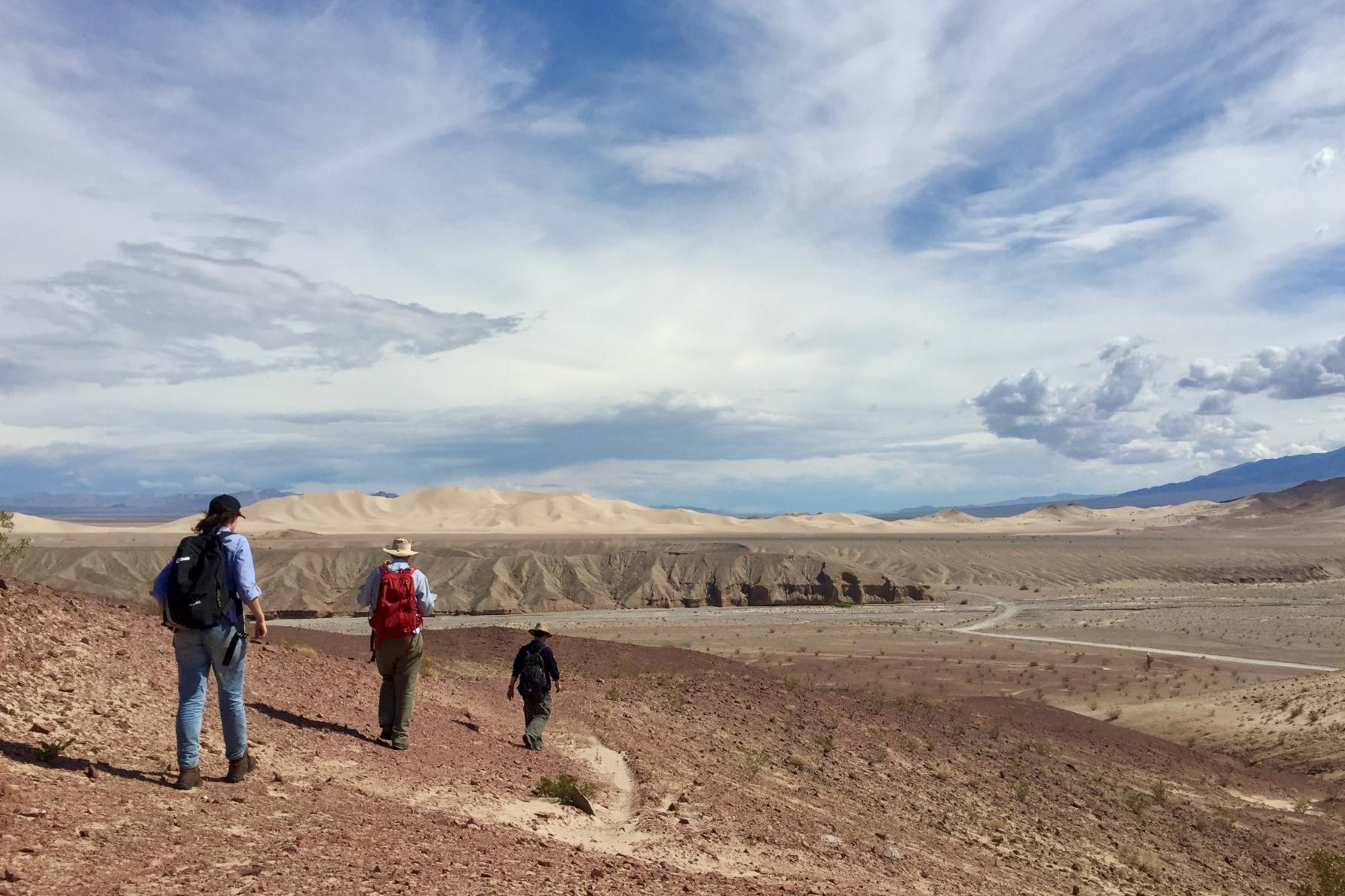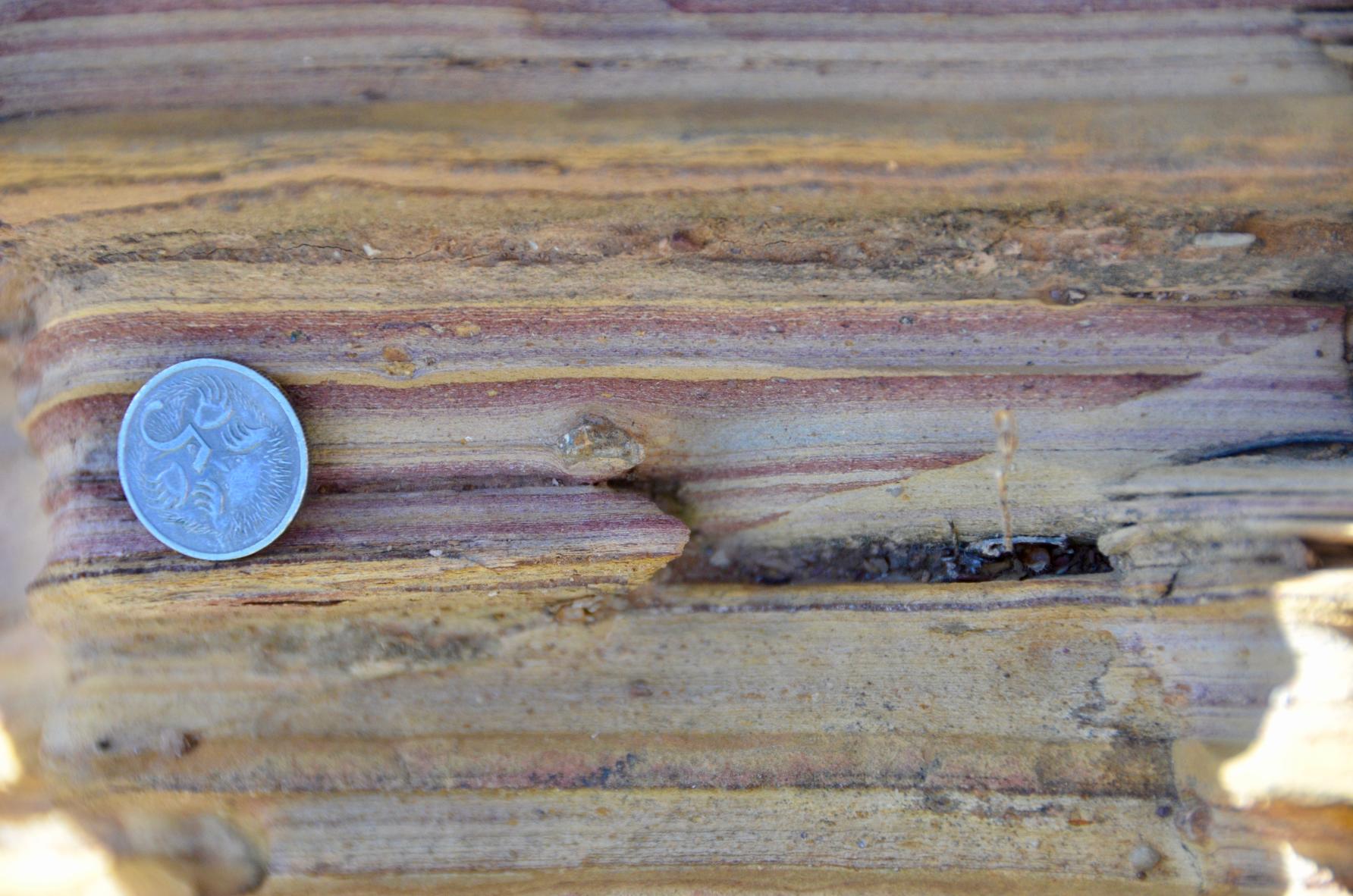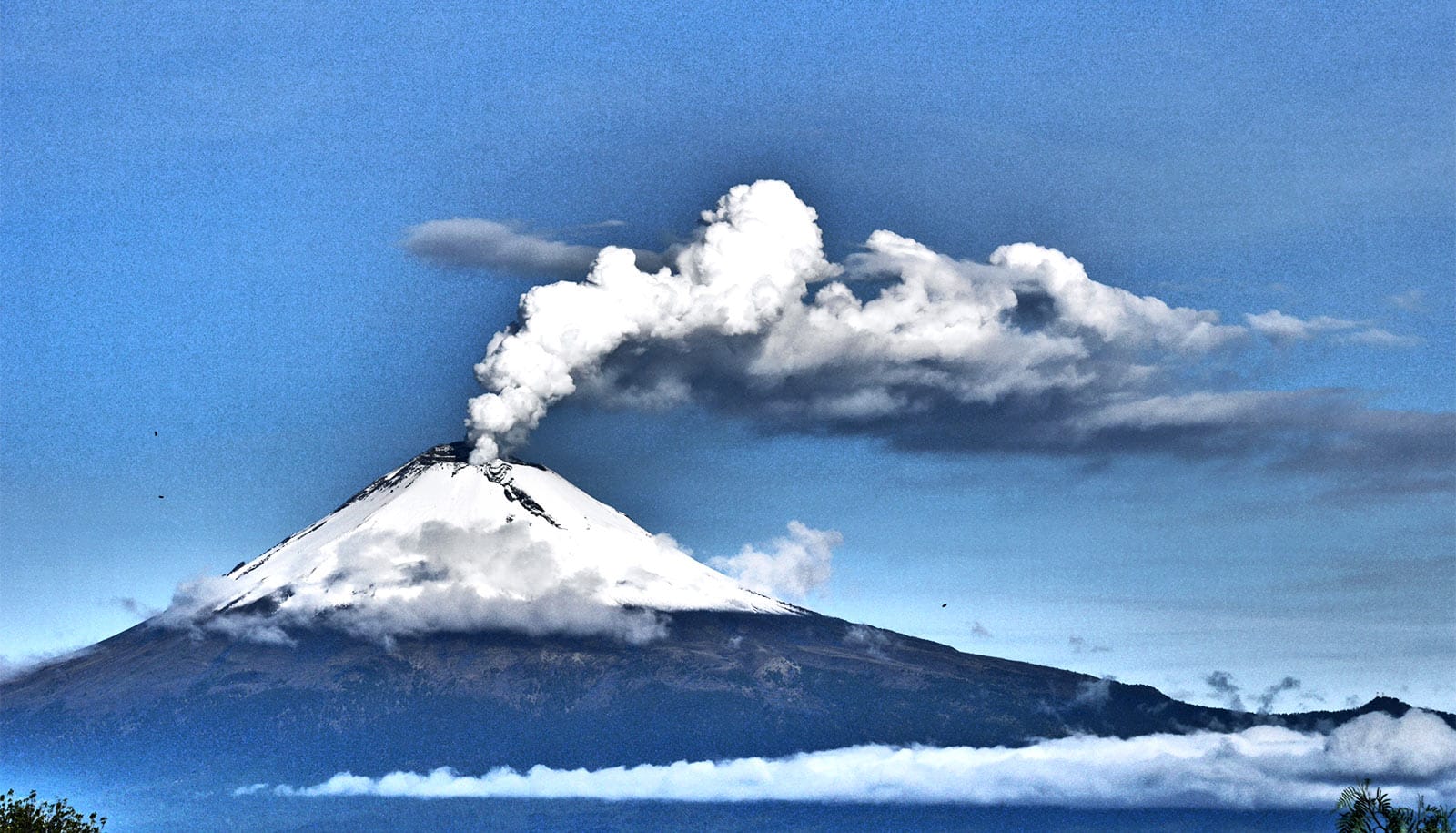
(Credit: George Miroshnikov/Flickr )
Hot rocks offer clues to life on ‘Snowball Earth’
Scientists braved the heat to answer a question about oxygen and "Snowball Earth," a period when the oceans virtually froze from the poles to the equator.

Iron-rich rocks from ancient glaciers indicate that complex life survived a period called “Snowball Earth” by taking refuge in oxygenated seawater.
Researchers Max Lechte of McGill University and Ashleigh Hood and associate professor Malcolm Wallace of the University of Melbourne describe their findings:
It’s 45 degrees in the Flinders Ranges, South Australia, under a cloudless sky. The landscape is almost completely still, including the kangaroos resting in the shade of red gums growing along a dry creek bed.
On Snowball Earth, the oceans virtually froze over all the way from the poles to the equator.
The only movement comes from a small group of geologists trawling the ground.
We are out under the beating sun in the hills of Holowilena South Station looking for samples of iron-rich rocks. These rocks will turn out to be a crucial clue in better understanding how early life survived the Earth’s most extreme ice age, making more complex life forms possible.
In strange contrast to the summer heat, the hills we’re walking on are made of rocks that were deposited by glaciers around 700 million years ago, when the hills of the Flinders Ranges were on the ocean floor. They record the conditions of our oceans when for over 50 million years the planet was encased in ice.
Sedimentary rocks deposited from these ancient glaciers can be found globally, mostly in places that today are vast deserts, like the Flinders Ranges, Death Valley in California, and northern Namibia.
This extreme ice age is known as “Snowball Earth,” and the geological record shows that it was so severe that the oceans virtually froze over all the way from the poles to the equator.
It occurred at a time when many of the forms of complex life that exist today were first starting to evolve, and the harsh conditions of Snowball Earth would have been a major threat to their survival. We know that these organisms survived because if not we wouldn’t be here, but how they survived remains a mystery.

Fossils from Snowball Earth
The fossil record suggests that early complex life had begun to evolve prior to Snowball Earth, including eukaryotes—organisms with advanced cell structures—and possibly some early primitive animals like sponges. At this time eukaryotes were almost entirely confined to the oceans.
Many of them, especially early animals, needed oxygen-rich marine habitats to survive. But during the Snowball Earth, the oceans are thought to have been anoxic, or oxygen-poor, as the global ice cover sealed off the oceans from sunlight and the atmosphere.
This problem has generated a long-standing debate about what environments could have possibly existed as refuges for complex life to survive in these cold, oxygen-poor oceans. One theory has even gone as far as to suggest that these organisms could have survived in puddles of meltwater on the surface of the ice, with the oceans underneath thought to be uninhabitable.

Ironstones and oxygen
Back to the summer heat in the Flinders Ranges, we are looking at iron-rich rocks (known as ironstones) because these rocks can tell us an important story about oxygen dynamics during Snowball Earth.
This is the first direct evidence for oxygen-rich marine environments during Snowball Earth.
Without oxygen, dissolved iron is able to accumulate in seawater, and when subsequently mixed with oxygen this dissolved iron forms into ironstones that are deposited on the seafloor. The presence and age of ironstones can therefore tell us about the level of oxygen in the oceans at different times and places.
But looking at these sedimentary rocks in just one location isn’t enough to make claims about global conditions. In order to paint a global picture of seawater oxygen conditions during Snowball Earth we had to study other ironstones deposited during the same ice age in Namibia and California.
Although we didn’t have to deal with the same heat we endured in South Australia, we had to dodge elephants and lions in Namibia and carefully navigate the cactus fields of Death Valley.
In our study, published in the Proceedings of the National Academy of Sciences, we found that these ironstones were deposited in a range of glacial environments. Some were clearly deposited in close contact with the grounded ice sheet along what would have been shorelines. Others appeared to have been deposited further out to sea, offering a complete picture of marine environments during this time.
Oxygen below the ice
By examining the chemistry of the iron formations we can understand what the seawater conditions were like during Snowball Earth. We found that the chemistry of the iron formations deposited further away from the ice sheets showed evidence of the seawater having extremely low oxygen concentrations but being rich in dissolved iron. These oceans would have been uninhabitable for oxygen-dependent life like animals.
But excitingly, we discovered that the seawater closest to the ice-covered shoreline was actually oxygen-rich.
This is the first direct evidence for oxygen-rich marine environments during Snowball Earth, and provides a possible explanation for how the evolving complex marine life of the time was able to survive and later evolve.
But why were these environments closest to the ice sheet oxygenated, when the rest of the seawater was starved of oxygen?
It may be that meltwater coming from the base of the ice sheet actually played a crucial role in providing oxygen to the seawater. This is possible because glacial ice forms from the accumulation of snow, which contains trapped air bubbles. After the snow is compressed and buried, it eventually melts again at the base of the ice sheet, producing meltwater that is enriched with oxygen from these air bubbles.
This process occurs continuously in modern glacial environments like Antarctica. The outwash of this meltwater into the oceans could well have created the vital oxygen oases needed for emerging complex life forms to survive Snowball Earth.
And the rocks that tell this story are now baking under the desert sun. Geological time clearly has an ironic sense of humor.
We would like to thank the traditional owners of the land we worked on, including the Adnyamathana people of Ikara.
Coauthors of the study are from Nanjing University, the University of Nevada, McGill University, Yale University, and the University of Melbourne. Lechte completed this work as part of his PhD at the University of Melbourne.
Source: University of Melbourne
The post Hot rocks offer clues to life on ‘Snowball Earth’ appeared first on Futurity.
Share this article:
This article uses material from the Futurity article, and is licenced under a CC BY-SA 4.0 International License. Images, videos and audio are available under their respective licenses.
Related Articles:
Volcanoes may have shaped oxygen’s evolution on Earth
June 15, 2020 • futurityVolcanic eruptions might have given Earth its first oxygen
Dec. 3, 2019 • futurityLinks/images:
- https://pursuit.unimelb.edu.au/individuals/dr-maxwell-lechte
- https://pursuit.unimelb.edu.au/individuals/dr-ashleigh-hood
- https://pursuit.unimelb.edu.au/individuals/associate-professor-malcolm-wallace
- https://doi.org/10.1073/pnas.1909165116
- https://pursuit.unimelb.edu.au/articles/iron-and-ice-how-life-survived-snowball-earth
- https://www.futurity.org/snowball-earth-oxygen-life-2224992-2/
- https://www.futurity.org


